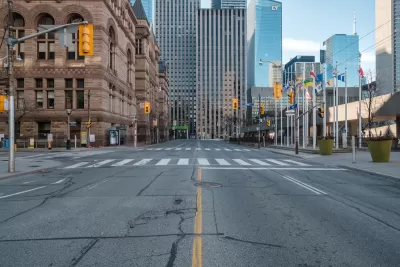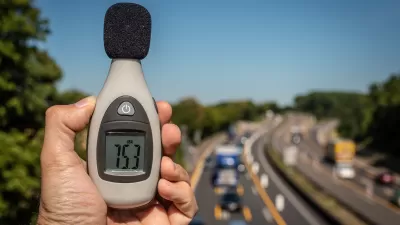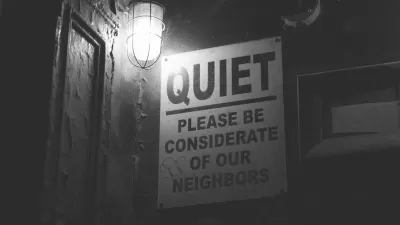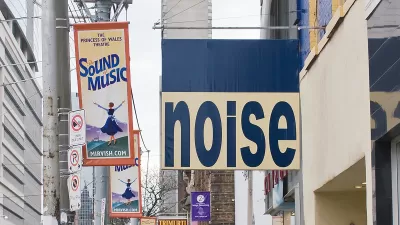During the pandemic, many neighborhoods became quieter than ever—but not everyone experienced the benefits equally.

During the Covid-19 pandemic, many urban residents experienced a never-before-heard stillness. But as urban noise returns in full force, Erica D. Walker, a researcher in community noise in urban environments, describes the dangers of excessive noise in an article in Streetsblog USA. “The health impacts associated with higher noise levels are brutal. They can limit the quantity and quality of our restorative sleep and disrupt our mood so profoundly that our body activates a flight-or-fight response,” Walker writes.
In the United States, harmful noise levels aren’t distributed equitably, Walker adds. “A very quick scan of our nation’s urban planning policies and practices will clearly show you that we as a country have a refined knack for dumping acoustical trash – like highways, airports, and truck depots – into the laps of those with very little power to fight back.” Many of these places continued to function in some capacity, providing essential services during the pandemic. A study by Walker’s organization, Community Noise Lab, also found that minority communities in Boston continued to experience high noise levels during the height of the pandemic in part due to a rise in fireworks activity. Cities including Paris, France have started testing automated enforcement of noise limits using decibel meters and cameras.
FULL STORY: Who Gets Peace and Quiet?: Urban Noise in the COVID-19 Pandemic

Alabama: Trump Terminates Settlements for Black Communities Harmed By Raw Sewage
Trump deemed the landmark civil rights agreement “illegal DEI and environmental justice policy.”

Study: Maui’s Plan to Convert Vacation Rentals to Long-Term Housing Could Cause Nearly $1 Billion Economic Loss
The plan would reduce visitor accommodation by 25% resulting in 1,900 jobs lost.

Why Should We Subsidize Public Transportation?
Many public transit agencies face financial stress due to rising costs, declining fare revenue, and declining subsidies. Transit advocates must provide a strong business case for increasing public transit funding.

Wind Energy on the Rise Despite Federal Policy Reversal
The Trump administration is revoking federal support for renewable energy, but demand for new projects continues unabated.

Passengers Flock to Caltrain After Electrification
The new electric trains are running faster and more reliably, leading to strong ridership growth on the Bay Area rail system.

Texas Churches Rally Behind ‘Yes in God’s Back Yard’ Legislation
Religious leaders want the state to reduce zoning regulations to streamline leasing church-owned land to housing developers.
Urban Design for Planners 1: Software Tools
This six-course series explores essential urban design concepts using open source software and equips planners with the tools they need to participate fully in the urban design process.
Planning for Universal Design
Learn the tools for implementing Universal Design in planning regulations.
Caltrans
Smith Gee Studio
Institute for Housing and Urban Development Studies (IHS)
City of Grandview
Harvard GSD Executive Education
Toledo-Lucas County Plan Commissions
Salt Lake City
NYU Wagner Graduate School of Public Service





























